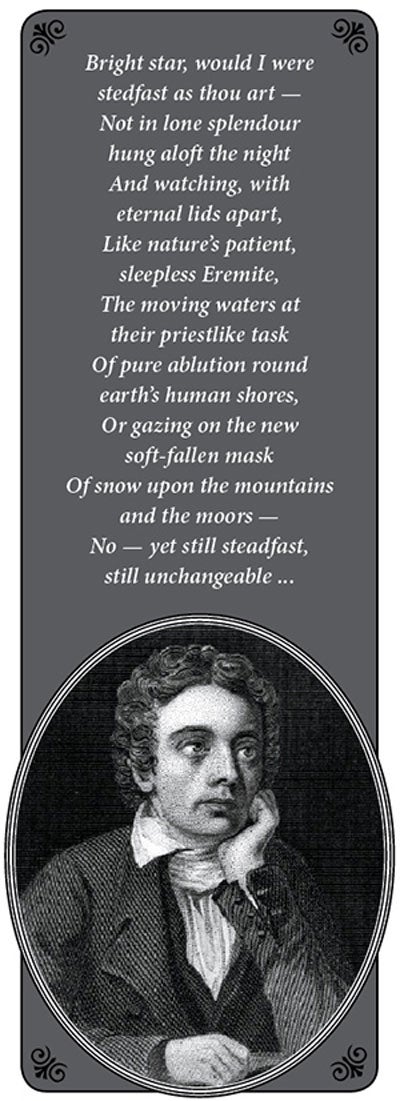Keats was traveling to try to help control his recent diagnosis of tuberculosis. Al-though his journey did not avert the onset of the terminal phase of his disease, it probably gave him a few extra months of life. It was during this time that he penned a sonnet so beautiful that its words invite us to turn from the page and look up at the sky. The poem was written in a specific place under a specific sky, but its message is universal.
“Bright star” is not even Keats’ most famous astronomical sonnet. In October 1816, he spent a night at a friend’s home reading George Chapman’s 17th-century translation of Homer, probably The Odyssey. The vivid translation so moved Keats that, on returning home in the morning, he put pen to paper and wrote a sonnet commemorating his experience: “On first looking into Chapman’s Homer.” Despite his extensive education, Keats reached an epiphany on studying this translation; he was as excited as he had ever been in his life when he “heard Chapman speak out loud and bold.”
The next two lines of the poem connect this work of English literature with the night sky directly and uniquely, complimenting not just those who stargaze, but those who spend years searching for unseen worlds. “Then felt I like some watcher of the skies,” he wrote, “When a new planet swims into his ken.” Few words are as capable of bringing home the exquisite feeling of discovery.
When Keats wrote his lines in 1816, the discovery of Uranus 35 years earlier was a faded memory — as were the earliest asteroids Ceres, Pallas, Juno, and Vesta, which had long ago left their marks in the sands of earthly time. But, in 1811, the French observer Honoré Flaugergues discovered the Great Comet of 1811, one of the brightest ever seen — brighter and bigger than even C/1965 S1 (Ikeya-Seki), C/1995 O1 (Hale-Bopp), or C/2006 P1 (McNaught). I suspect that Keats had this more recent discovery, just 5 years prior, in mind. If so, the poem demonstrates that Keats had eclectic interests like Shakespeare and William Wordsworth, who also knew the stars and recognized the significance of the worlds that move among them.
Other allusions to the sights of heaven appeared later in his “Bright star” sonnet. Although he does not identify the particular star he rhapsodizes about, it was most likely bluish-white Sirius. The second line, “Not in lone splendour hung aloft the night,” points not to a lonely star like Polaris, the North Star, but to a physically bright star that may or may not have others surrounding it. Sirius dominates the early spring evening sky, when Keats began writing the poem, and he could not have been alluding to a bright planet like Jupiter, Venus, or Saturn because these worlds were not visible that spring.
As we begin the new year, we look with anticipation at the sky for similarly inspiring events. Two comets — P/2006 T1 (Levy) and C/2010 X1 (Elenin) — approach our planet. They won’t crash into Earth, but they will get close enough to heighten interest in the heavens. The night sky beckons us all, whether we are mathematicians or poets — as the readers of Keats’ wonderful sonnets must already know.











